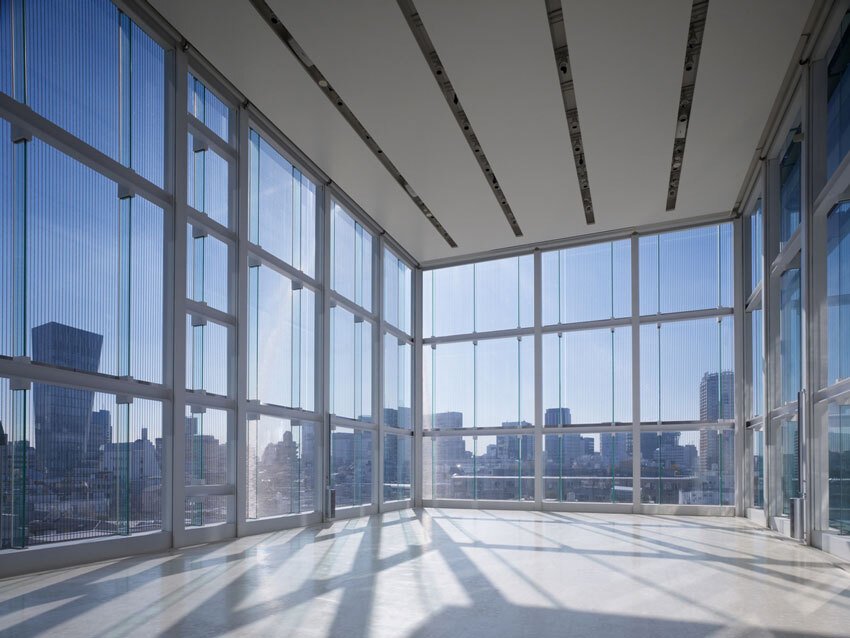Foreign luxury brand boutiques are not a rare sight in Tokyo. Both Omotesando and Ginza have been referred to as the Champs-Élysées of Asia due to the sheer number of luxury brand boutiques one can find there. Throughout the years, Japan has continued to rank as one of the top foreign luxury brand consumers in the world. According to marketing studies, Japanese customers exhibit consistent adherence to high quality while also trusting well-established companies. This happens to go hand in hand with Japanese people’s appreciation for the arts with Tokyoites frequenting museums almost as much as they do shopping malls.
In Tokyo you can find luxury brand boutiques offering both shopping and art attractions to customers, or rather anyone who decides to visit. Last year Louis Vuitton, Chanel, and Hermès (in that order) were classified as the three most valuable luxury brands worldwide according to Statista, a German company specializing in market and consumer data. As well as the high-end boutiques that are scattered all over Japan’s capital city, the three companies have also established their own art galleries — an admirable endeavor that enriches the promotion and global awareness of art and culture for a broad range of audiences who can enjoy the exhibitions for free.
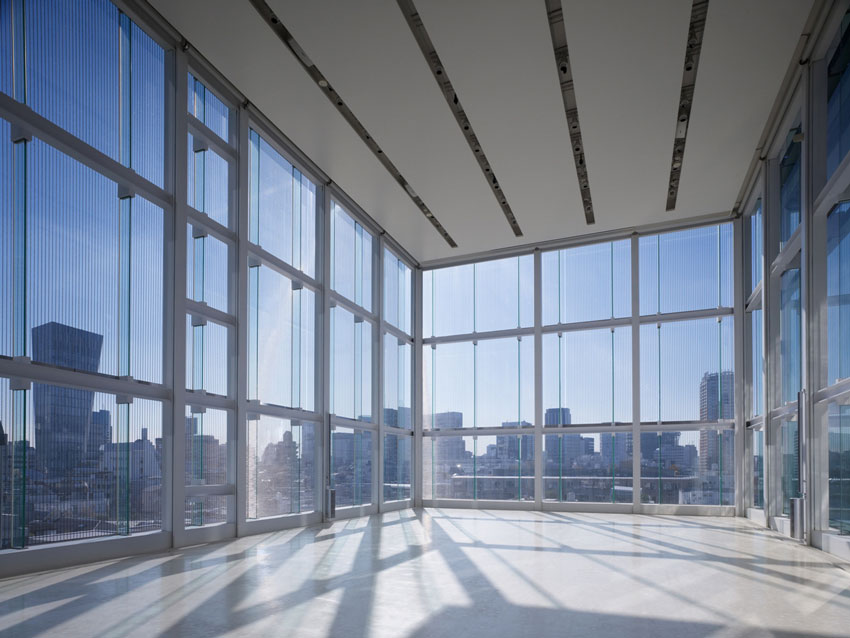
Espace Louis Vuitton Tokyo – Omotesando
The Louis Vuitton Omotesando store opened in 2002 and was designed by architect Jun Aoki. The glass box framed in random stackable “trunks” is said to envision a travel-like experience while shopping and also harmonizes beautifully with the Zelkova trees lined along Omotesando Avenue. Encompassing Louis Vuitton’s immeasurable dedication towards creativity and the arts, the Espace Louis Vuitton was added to the seventh floor of the boutique in 2011. The gallery is as elegant as the store. It is surrounded by glass walls within a floor area of 193 square meters and a ceiling that is 8.45 meters high. The aerial space welcomes an abundance of sunlight into the room and creates stimulating reflections on the floors and walls. Since the gallery’s inauguration, more than twenty exhibitions have been showcased, representing varied contemporary art pieces from the collections of Fondation Louis Vuitton including prints, photography, architecture, painting, sculpture, film and visual installations, both by Japanese and international artists.
Currently on display at Espace Louis Vuitton until May 30 is “Doug Aitken—New Ocean: Thaw: A presentation of the American artist’s kaleidoscopic installations of abstract images of Alaskan views.
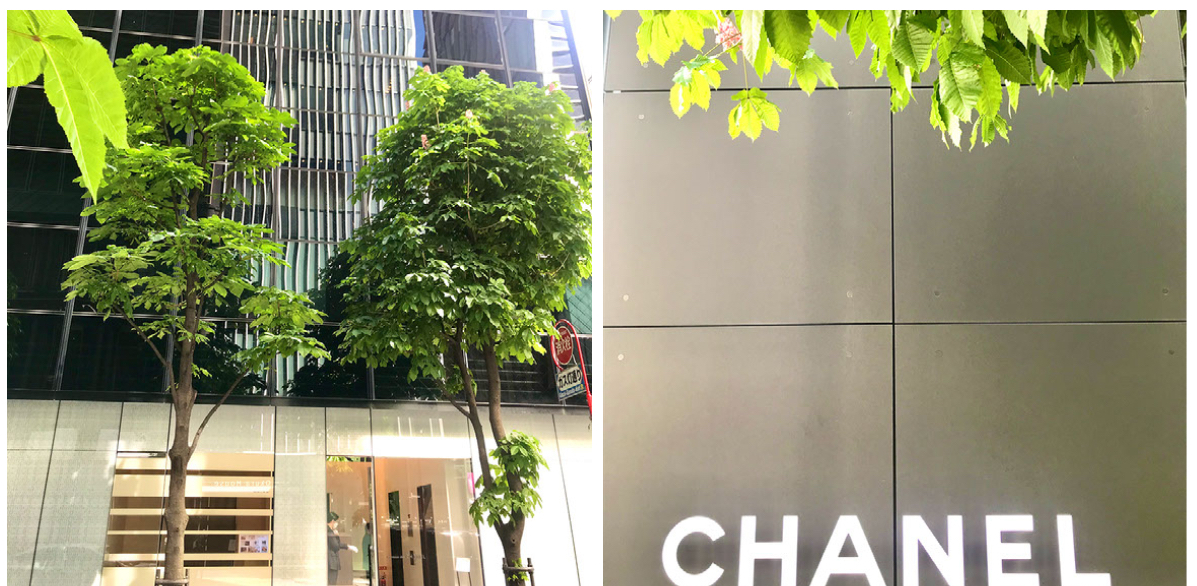
The entrances of Beige Alain Ducasse Restaurant and Chanel Nexus Gallery. Photos by Alma Reyes
Chanel Nexus Hall – Ginza
The iconic French fashion and perfume brand Chanel launched its first flagship boutique in Namiki Street, Ginza in 1994 and the shop was given a makeover in 2017 by architect Peter Marino. The other flagship store in Ginza is on Chuo Street across from Matsuya Department Store. Opened in 2004, it is regarded as the biggest Chanel boutique in the world. The extravagant glass wall building, also designed by Marino, not only boasts a 1,300-square-meter shopping space, but is also home to the restaurant Beige Alain Ducasse by celebrated French chef Alain Ducasse. In addition to that, you can enjoy a rooftop garden, as well as a concert hall and art gallery in the Chanel Nexus Hall on the fourth floor.
The 56-meter-high building is enclosed in an aluminum block that encapsulates Chanel handbags’ signature tweed pattern. The architecture is widely praised for its striking LED technology using 700,000 embedded light-emitting diodes. This converts the glass facade into a giant television screen that becomes a black background at night for light display and resumes a clear image during the day for company workers to see out of the window. The Chanel art gallery and concert hall both host a wide range of exhibitions, such as paintings, sculptures, and photography, as well as concerts and events, all embodying the creative spirit of Coco Chanel who was an enthusiastic supporter of the arts, music, and fashion.
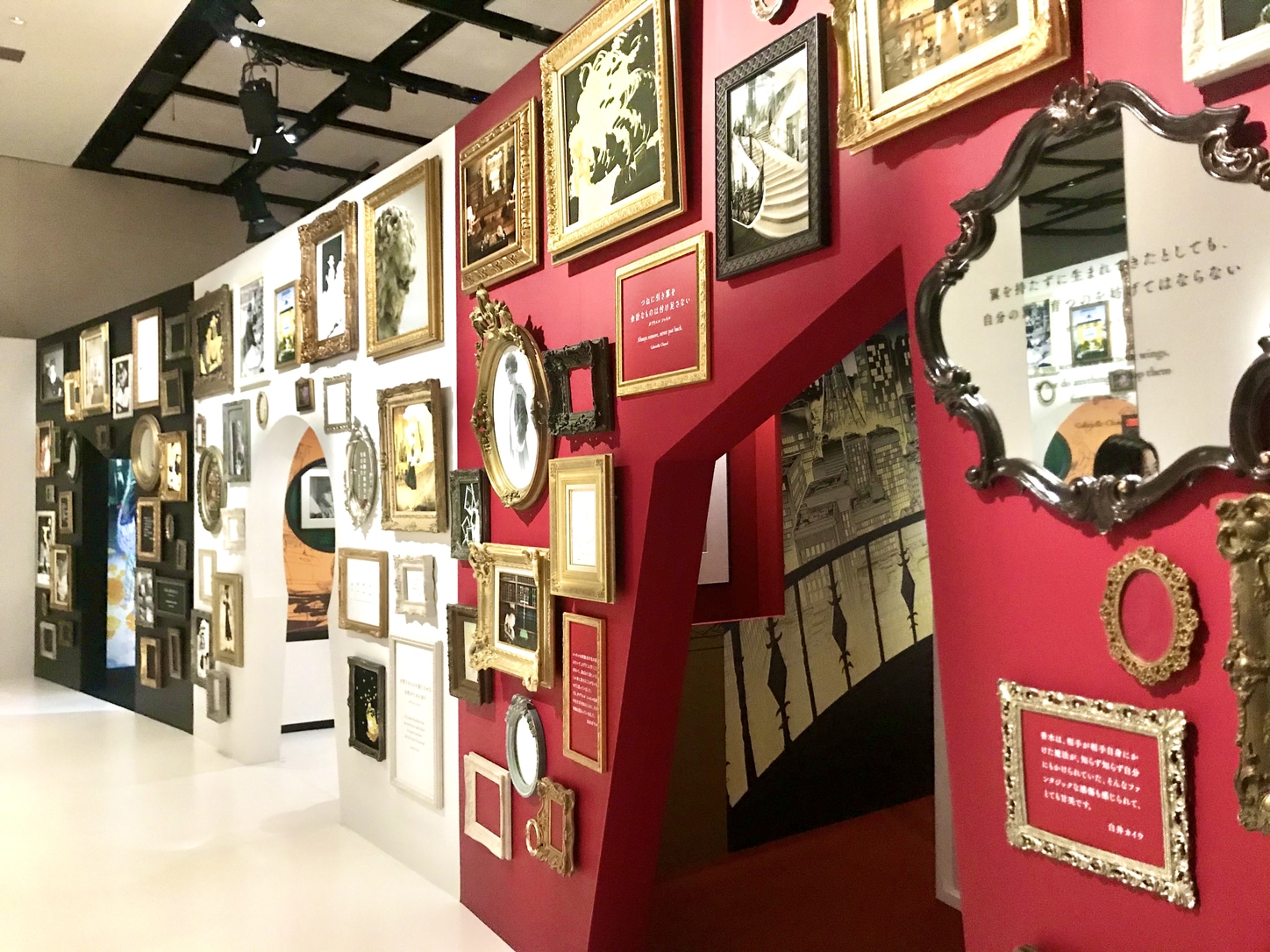
The current exhibition at Chanel Nexus Hall.
Photo by Alma Reyes
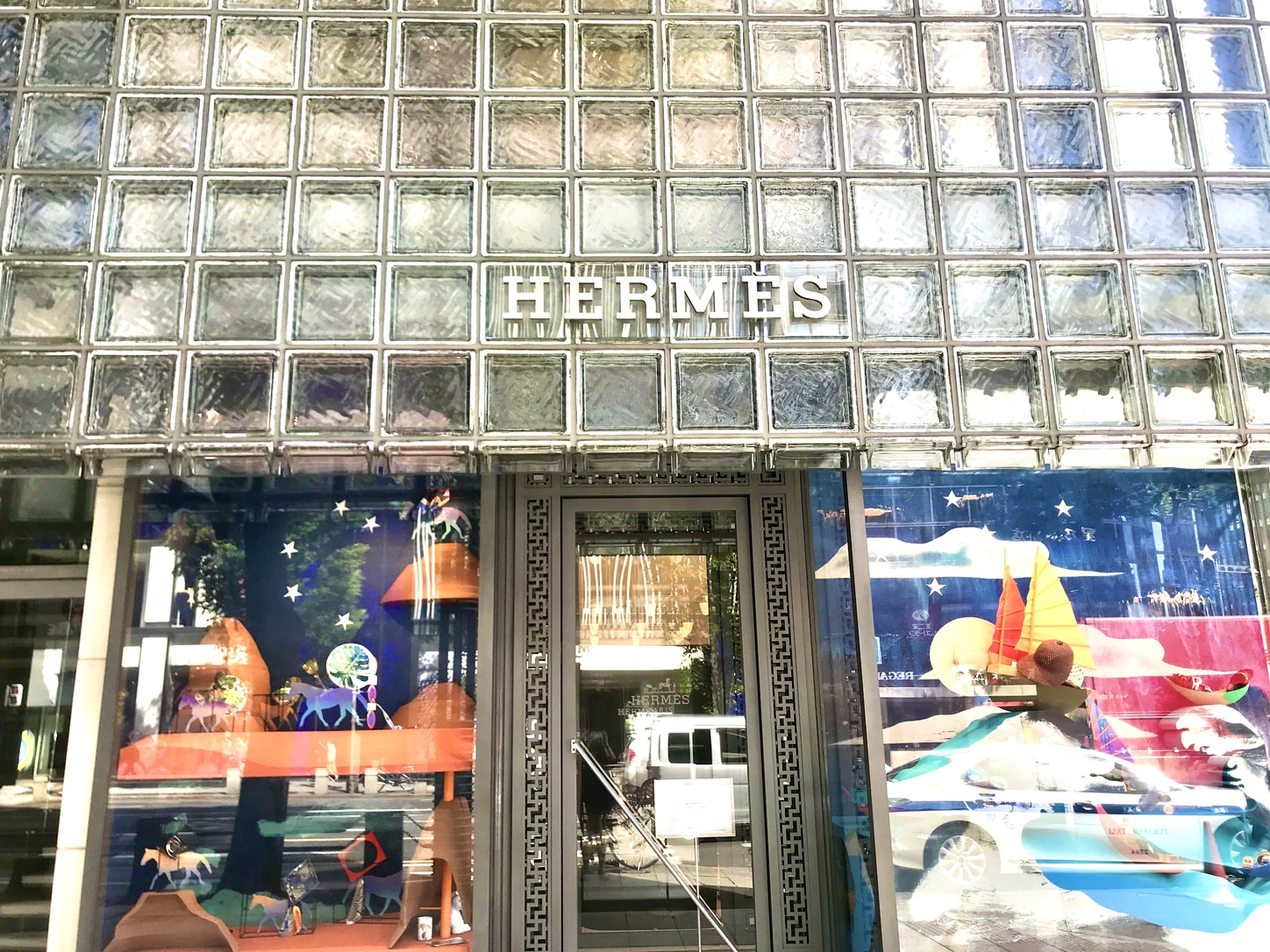
Photo by Alma Reyes
Maison Hermès Le Forum – Ginza
Maison Hermès, the flagship shop in Ginza, opened in 2001 and was designed by renowned Italian architect Renzo Piano. The sleek tower in glass blocks was devised by Piano to resemble a “magic lantern”, similar to the lanterns that are traditionally hung from the doors of Japanese houses. The glass block facade protrudes like classic jewelry with a modern touch. It creates a translucent effect while glowing elegantly at night. Piano also applied traditional anti-seismic systems adopted by Japanese temples.
Consisting of fifteen floors with a total area of 6,000 square meters, the building also contains a rooftop garden, the art gallery Le Forum on the eighth floor and a reservation-only mini-theater called Le Studio on the tenth floor. The exhibition space is illuminated by a soft light that filters through the glass blocks and emphasizes the high ceiling, making it a perfect venue for visual installations. There is also a small mezzanine floor to showcase a corridor of exhibits. In conjunction with the Hermès Foundation, a non-profit organization established in Paris in 2008, Le Forum supports creative projects related to art, technology, environment, education and has hosted over fifty exhibitions since its opening.
View this post on Instagram
Running until July 18 is a multi-media exhibition by London-based curator Mathieu Copeland, “Exhibition Cuttings,” which presents visuals of environmental concepts such as the cutting and grafting of plants, combined with sound and film projections. There is also a scheduled showing of the award-winning movie “Life of Pi” by talented director Ang Lee at Le Studio. However, both events are temporarily postponed until further notice due to the ongoing pandemic.
*Please check the websites of the galleries for updated information about opening hours during the pandemic situation. All galleries are free to enter, but may require advanced reservations.
Can’t get enough of art? Check these Tokyo Weekender articles:
- Louis Vuitton Spring 2021 in Tokyo – New Facade and a Special Exhibition
- Women Voices Lead the Way at Mori Art Museum’s New Exhibition
- Watch This Space: Ichihara City in Chiba Prefecture is Where Contemporary Art and Daily Life Mix
- Understanding Yayoi Kusama Through Her Latest Exhibition
- Japanese Contemporary Art: Why It’s Not Big in Japan (Yet)
Updated On May 13, 2021

